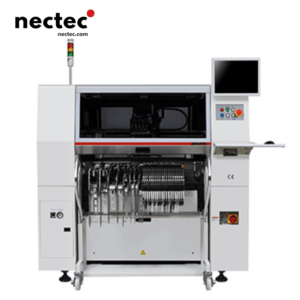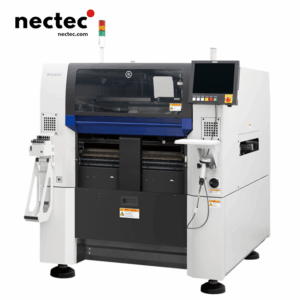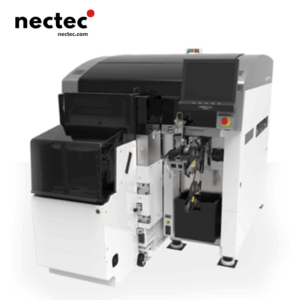In the world of electronics manufacturing, precision is crucial. The ability to accurately place components on a circuit board can significantly impact the performance and reliability of the final product. This is where manual pick and place machines step in. Though they may not have the automation capabilities of their more advanced counterparts, manual pick and place machines offer a range of benefits that make them an invaluable tool for both small-scale operations and larger manufacturing facilities.
Pochopenie ručných strojov na vyberanie a umiestňovanie
A manual pick and place machine is a device used to position electronic components onto a PCB (Printed Circuit Board) with precision. Unlike automated pick and place machines that utilize robotic arms and advanced programming, manual machines require the operator to physically pick up components and place them on the board. This process may seem simple, but it demands skill and attention to detail.
Komponenty ručných strojov na vyberanie a umiestňovanie
- Pracovný povrch: This is where the PCB is positioned and secured during the placement process.
- Podávač komponentov: It holds the components in a way that makes them accessible for the operator.
- Optical Alignment System: Some models come equipped with systems that help align components accurately.
- Hand Tool: A vacuum pick-up tool or simple tweezers is often used to handle components.
Výhody používania ručného stroja na vyberanie a umiestňovanie
Manual pick and place machines are often praised for their simplicity and effectiveness. Some of the notable advantages include:
1. Nákladovo efektívne riešenie
For small businesses or startups, investing in an automated pick and place machine may not be feasible. Manual machines are significantly less expensive while still providing robust capabilities for low to medium volume production runs.
2. Flexibilita výroby
Manual machines allow operators to switch between different projects with ease. If your production demands change frequently, having a manual pick and place machine can adapt more readily to varying component sizes and types.
3. Zvýšená presnosť
While automated machines can achieve incredible precision, manual machines also provide significant control. A skilled operator can make real-time adjustments to placement based on visual assessment, potentially leading to even better results in certain conditions.
4. Compact Size
Manual pick and place machines tend to be smaller and do not require extensive floor space, making them suitable for small workshops or labs that are short on room. This can also lead to reduced overhead costs for businesses operating in tight environments.
Ako obsluhovať ručný stroj na vyberanie a umiestňovanie
Operating a manual pick and place machine may vary from model to model, but the general process is quite similar. Below is a step-by-step guide:
Krok 1: Príprava pracovnej stanice
Begin by ensuring that your work surface is clean and organized. Position your PCB securely on the work surface and have your components ready in the feeder.
Step 2: Familiarize Yourself with the Machine
Before you start, take some time to read the manufacturer’s instructions. Understanding the controls and functions of your specific machine will streamline the process.
Step 3: Pick the Component
Use the appropriate hand tool, whether a vacuum pick-up tool or tweezers, to carefully pick up the component from the feeder. Ensure that you grip it securely to avoid dropping it during placement.
Step 4: Align and Place
Once you have the component, visually align it above the target pad on the PCB. Many modern machines have an optical alignment system that can assist with this step. Once aligned, gently lower the component onto the pad, applying gentle pressure to ensure it adheres properly.
Step 5: Repeat
Continue picking and placing each component, ensuring to maintain focus and precision throughout the process. Regularly check for alignment and positioning to maintain quality standards.
Bežné chyby, ktorým sa treba vyhnúť
Even with the best machines, common mistakes can lead to significant issues in production. Here are a few pitfalls to watch out for:
1. Poor Component Handling
Ensure that you are handling components delicately. Dropping or mishandling them can easily lead to damages that will not be apparent until the final checks.
2. Neglecting Calibration
Regularly calibrate your machine to ensure that it functions correctly. Neglecting this can lead to inaccuracies in component placement.
3. Inadequate Lighting
A well-lit workspace is essential for accuracy. Ensure that your workstation is well-lit to avoid mistakes due to poor visibility.
Výber správneho ručného stroja na vyberanie a umiestňovanie
When considering a manual pick and place machine, it’s crucial to evaluate your specific needs. Here are some factors to consider:
1. Component Sizes
Ensure that the machine you choose can comfortably accommodate the variety of component sizes you intend to use.
2. Objem výroby
The machine should meet the production demands of your business. Some machines are better suited for low-volume projects, while others are capable of handling higher outputs.
3. Používateľská prívetivosť
Look for machines that have intuitive controls and a design that helps reduce operator fatigue. Training time will be reduced with user-friendly machines.
Tips for Maintaining Your Manual Pick and Place Machine
Proper maintenance extends the lifespan of your manual pick and place machine and ensures optimal performance. Here are some tips:
1. Clean Regularly
Dust and debris can affect the machine’s performance. Regularly clean the machine, particularly around the pick-up tools and feeder areas, to avoid blockages.
2. Inspect Components
Regularly check the condition of the components, including tools and feeders, to ensure they are functioning correctly. Replace any worn parts as needed.
3. Follow Manufacturer Guidelines
Always refer to the manufacturer’s guidelines for specific maintenance procedures and schedules. This can help prevent premature wear and tear.
By understanding the capabilities and operational requirements of manual pick and place machines, both newcomers and seasoned professionals can harness these tools to improve efficiency and precision in their electronic assembly processes.

















